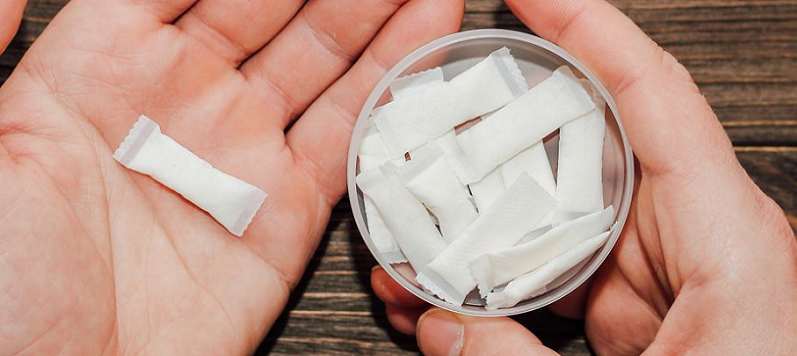Tobacco smoking leads to the development of several non-communicable diseases like lung cancer. On the other hand, the American Lung Association reveals that tobacco use can also result in various other health concerns you may not be aware of, contributing to the 480,000 lives lost to smoking. For one, the chemicals present in tobacco products cause inflammation of the blood vessels. As such, smokers can have rheumatoid arthritis, characterized by painful swelling, joint deformity, and bone loss.
In addition, the American Lung Association states that, apart from contributing to type 2 diabetes, smoking increases the illness’ risk of complications, like poor blood flow to legs and feet. As our post ‘Resveratrol Helps with Diabetes Management and Prevention’ mentions, resveratrol — a grape substance present in red wine — is a potent antioxidant that can decrease insulin resistance and reduce inflammation to treat diabetes. Interestingly, it can also boost your cells’ protection against free radicals. Specifically, it fights against harmful external sources—such as cigarette smoke—from harming your body.
All that said, tobacco use is a habit that many smokers should avoid to lead healthy lives. Below, this article will look at what happens once you quit smoking and list tips on successfully starting your smoking cessation journey.
What Happens After You Quit Smoking?
Within the first few days
You will observe a few noticeable changes in the days after quitting. A 2022 US Food and Drug Administration (FDA) article shares that you can feel discomfort from symptoms such as anxiety, difficulty concentrating, disrupted sleep patterns, and increased appetite. Don’t fret, though, as these should only last a few weeks and can be addressed with nicotine replacement therapy (NRT), which will be expounded on in the next section.
Within two to three months
As a 2022 Geisinger feature explains, your lung function can begin to improve within just eight hours of quitting smoking. You can confirm this by checking if you experience decreased coughing or shortness of breath. However, you can experience better lung capacity within two to three months. As such, you can rebuild your endurance through cardiovascular exercises, including jumping and running.

After five to ten years
A report on smoking by the Surgeon General of the US Department of Health and Human Services (USDHHS) found that smoking cessation cuts the risk for esophageal and oral cavity cancer by half as soon as five years after quitting. It is also revealed that, after ten years, smokers can observe a reduced risk for pancreatic cancer.
After ten years or more
There’s substantial evidence that smoking can boost the likelihood of developing stomach cancer. The USDHHS explains that this is because the carcinogens present in tobacco smoke can cause chronic inflammation in the stomach. Notably, the risk estimates for ex-smokers who’ve reached ten years to 20 years since cessation are considerably lower than those with fewer years since quitting smoking. The same can be said for colorectal cancer since individuals with the greatest number of years since smoking cessation (ten years to 40 years) had a lower risk estimate than ex-smokers who only had less than ten years since quitting smoking.
Since quitting tobacco use can lead to better health outcomes, the next section will provide tips on effectively beginning your smoking cessation plan.
How to Get Started On Your Smoking Cessation Journey
Opt for a nicotine patch
As the referenced FDA article points out, your quit attempt can entail several obstacles. You may contend with withdrawal symptoms like temporary depression or irritability frequently during the first few days or weeks after quitting. Fortunately, the FDA recommends leveraging NRTs, such as nicotine patches, to manage cravings successfully. As the Nicotrol transdermal patch demonstrates, users can wear these for up to 24 hours for smooth nicotine delivery. They’re also available in different strengths, so you can gradually lower your dose as you progress with your smoking cessation plan.
Utilize nicotine pouches
As well as nicotine patches, nicotine pouches are also effective smoking cessation aids, providing users with a kick of nicotine whenever cravings hit. These products are made with food-grade fillers and flavorings and can be tucked between the lip and gum. Nicotine pouches are versatile, as demonstrated by the On! nicotine pouches sold on Prilla which come in multiple strengths and flavors. Like patches, they come in different strengths to allow you to reduce your nicotine hit, but they’re also in flavors such as coffee, mint, and cinnamon for a pleasurable experience. Combined, these features help you move past your reliance on tobacco products by offering flexibility in your cessation journey. If you’re new to utilizing oral nicotine products, keep in mind to avoid swallowing the entire pouch to prevent slight stomach discomfort. So long as you use the product responsibly and perhaps opt for exciting flavors like berry or wintergreen, you can experience a satisfying way to meet cravings and adhere to your quit attempt.

Use a smoking cessation app
Mobile health apps have made it easier for individuals to access smoking cessation interventions. However, despite chronic smokers receiving the right treatment to counteract the effects of tobacco use, the National Institutes of Health highlights that nondaily smokers lack smoking cessation support. Luckily, smoking cessation apps now seek to encourage nondaily smokers to quit smoking for increased well-being. You can download the Smiling Instead of Smoking mobile app, which mainly hinges on positive psychotherapy to help users quit smoking. Here, individuals can set goals and receive specialized action plans to reduce cigarette use. The app has also introduced a game called Magma Bear, which offers points for finishing tasks to distract users from their desire to smoke.
Quitting tobacco use enables you to enhance your overall health and well-being. Hopefully, this article has given you essential insights on how to begin your smoking cessation plan.

